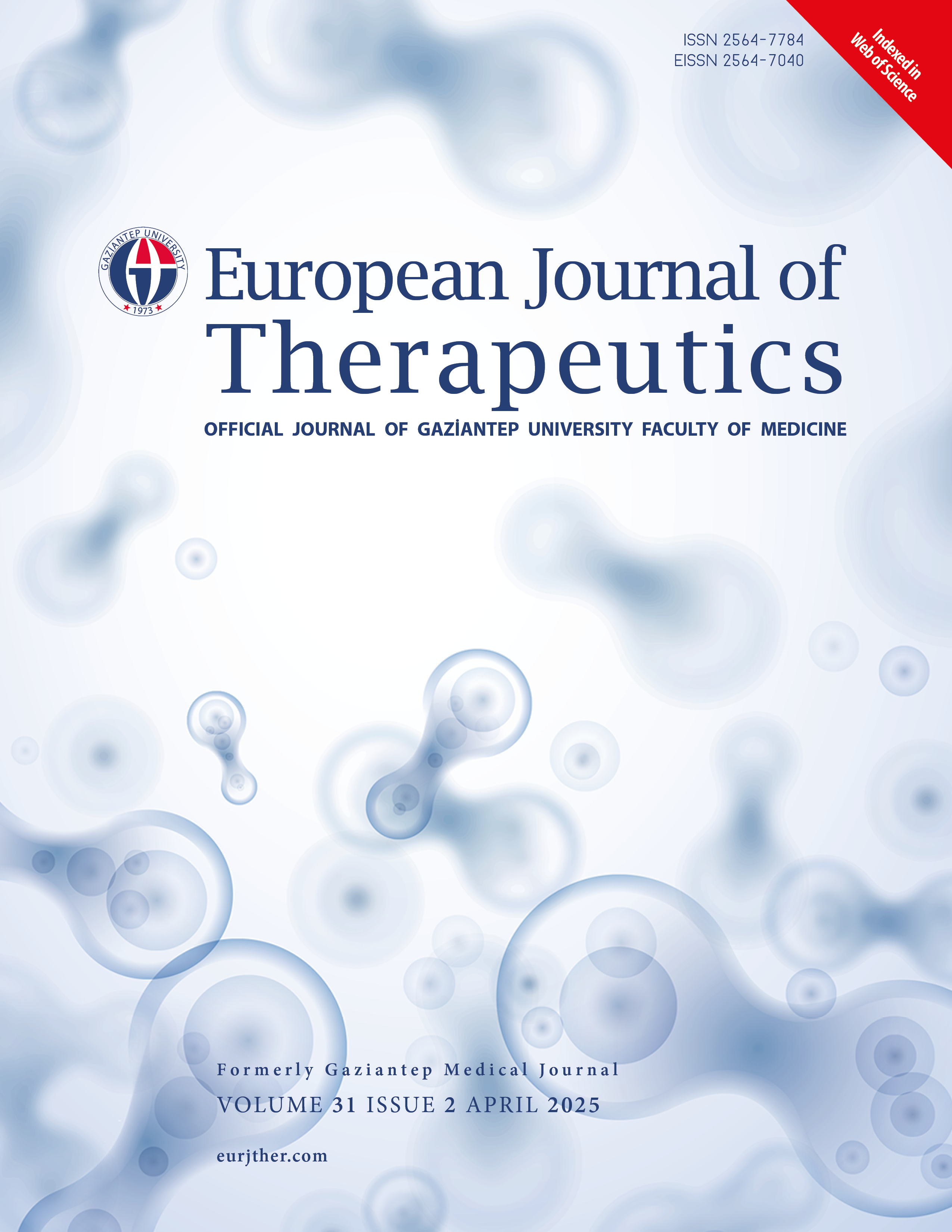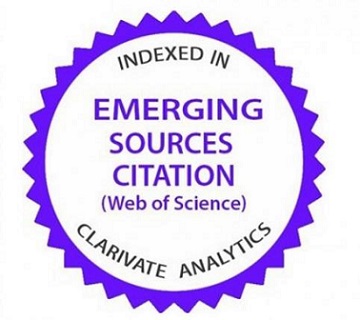Attachment, Maternal Childhood Trauma, and Risk of Autism in Offspring
DOI:
https://doi.org/10.58600/eurjther2573Keywords:
maternal childhood trauma, attachment styles, autism spectrum disordersAbstract
Objective: Maternal childhood trauma and insecure attachment styles have each been implicated in autism spectrum disorder (ASD) in children, yet their combined influence is not well understood. This study examined associations between these maternal factors and ASD status in children.
Methods: Thirty-two ASD dyads and thirty typically developing control dyads, children aged 0–5 years (91% male; M = 3.02 years, SD = 1.31), were enrolled. Mothers completed the Childhood Trauma Questionnaire (CTQ) and Relationship Scales Questionnaire (RSQ); children were assessed with the Childhood Autism Rating Scale (CARS). Between‑group differences were investigated, and a binary logistic regression adjusting for CTQ total score, socioeconomic status, child age, and birth weight was performed to assess the association of maternal factors with ASD status.
Results: Although the ASD group mothers reported slightly higher trauma scores, particularly in emotional abuse, these differences were not statistically significant. However, they showed significantly elevated preoccupied and dismissing attachment styles and lower secure attachment compared to the control group. In a binary logistic regression model, preoccupied attachment emerged as a robust predictor of ASD status (B = 1.87, p = 0.023; OR = 6.48), even when controlling for maternal childhood trauma, socioeconomic status, child age, and birth weight. Other attachment styles and the total maternal childhood trauma score did not reach significance.
Conclusion: These findings suggest that mothers of children with ASD are likely to display preoccupied attachment styles, underscoring the importance of addressing maternal attachment issues in early interventions.
Metrics
References
American Psychiatric Association (2013) Diagnostic and statistical manual of mental disorders (5th ed.). American Psychiatric Publishing. https://doi.org/10.1176/appi.books.9780890425596
Zeidan J, Fombonne E, Scorah J, et al. (2022) Global prevalence of autism: A systematic review update. Autism Res. 15(5):778–790. https://doi.org/10.1002/aur.2696
Hodges H, Fealko C, Soares N (2020) Autism spectrum disorder: Definition, epidemiology, causes, and clinical evaluation. Transl Pediatr. 9(1):55–65. https://doi.org/10.21037/tp.2019.09.09
Felitti VJ, Anda RF, Nordenberg D, Williamson DF, Spitz AM, Edwards V, Koss MP, Marks JS (1998) Relationship of childhood abuse and household dysfunction to many of the leading causes of death in adults. The Adverse Childhood Experiences (ACE) Study. Am J Prev Med. 14(4):245–258. https://doi.org/10.1016/s0749-3797(98)00017-8
Madigan S, Wade M, Plamondon A, Maguire JL, Jenkins JM (2017) Maternal adverse childhood experience and infant health: Biomedical and psychosocial risks as intermediary mechanisms. J Pediatr. 187:282–289. https://doi.org/10.1016/j.jpeds.2017.04.052
Cooke JE, Racine N, Plamondon A, Tough S, Madigan S (2019) Maternal adverse childhood experiences, attachment style, and mental health: Pathways of transmission to child behavior problems. Child Abuse Negl. 93:27–37. https://doi.org/10.1016/j.chiabu.2019.04.011
Kumar M, Amugune B, Madeghe B, et al. (2018) Mechanisms associated with maternal adverse childhood experiences on offspring’s mental health in Nairobi informal settlements: A mediational model testing approach. BMC Psychiatry. 18(381):1–10. https://doi.org/10.1186/s12888-018-1953-y
Wang X, Yin G, Guo F, et al. (2022) Associations of maternal adverse childhood experiences with behavioral problems in preschool children. J Interpers Violence. 37(21-22):20311–20330. https://doi.org/10.1177/08862605211050093
Yu W, Li R, Huang Y, et al. (2022) Relationship between maternal adverse childhood experiences and preschool children’s emotional and behavioral problems. Chin J Sch Health. 43(8):1130–1133. https://doi.org/10.16835/j.cnki.1000-9817.2022.08.003
Feng G, Wang X, Yin G, Sun Y (2022) Relationships between maternal adverse childhood experiences and autistic behaviors in preschool children. Chin J Sch Health. 43(8):1143–1147.
Roberts AL, Lyall K, Rich-Edwards JW, Ascherio A, Weisskopf MG (2013) Association of maternal exposure to childhood abuse with elevated risk for autism in offspring. JAMA Psychiatry. 70(5):508–515. https://doi.org/10.1001/jamapsychiatry.2013.447
Cassidy J, Jones JD, Shaver PR (2013) Contributions of attachment theory and research: A framework for future research, translation, and policy. Dev Psychopathol. 25(4 0 2):1415–1434. https://doi.org/10.1017/S0954579413000692
Riggs SA (2010) Childhood emotional abuse and the attachment system across the life cycle: What theory and research tell us. J Aggress Maltreat Trauma. 19(1):5–51. https://doi.org/10.1080/10926770903475968
Van IJzendoorn MH, Bakermans-Kranenburg MJ (1995) Attachment representations in mothers, fathers, adolescents, and clinical groups: A meta-analytic search for normative data. J Consult Clin Psychol. 64(1):8–21. https://doi.org/10.1037//0022-006X.64.1.8
Fearon RMP, Roisman GI (2017) Attachment theory: progress and future directions. Curr Opin Psychol 15:131–136. https://doi.org/10.1016/j.copsyc.2017.03.002
Adam EK, Gunnar MR, Tanaka A (2004) Adult attachment, parent emotion, and observed parenting behavior: Mediator and moderator models. Child Dev. 75(1):110–122. https://doi.org/10.1111/j.1467-8624.2004.00657.x
Bosquet M, Egeland B (2001) Associations among maternal depressive symptomatology, state of mind, and parent and child behaviors: Implications for attachment-based interventions. Attach Hum Dev. 3(2):173–199. https://doi.org/10.1080/14616730010058007
Rutgers AH, Bakermans-Kranenburg MJ, van IJzendoorn MH, van Berckelaer-Onnes IA (2004) Autism and attachment: A meta-analytic review. J Child Psychol Psychiatry. 45(6):1123–1134. https://doi.org/10.1111/j.1469-7610.2004.t01-1-00305.x
Kissgen R, Krischer M, Kummetat V, Spiess R, Schleiffer R, Sevecke K (2009) Attachment representation in mothers of children with attention deficit hyperactivity disorder. Psychopathology. 42(3):201–208. https://doi.org/10.1159/000209333
Schopler E, Reichler RJ, DeVilliers K, Daly K (1980) Towards objective classification of childhood autism: Childhood Autism Rating Scale (CARS). J Autism Dev Disord. 10(1):91–103. https://doi.org/10.1007/BF02408436
Incekas-Gassaloglu S, Baykara B, Avcil S, Demiral Y (2016) Validity and reliability analysis of the Turkish version of the Childhood Autism Rating Scale. Turk J Psychiatry 27(4):266–274. PMID: 28046196
Bernstein DP, Fink L, Handelsman L, Foote J (1994) Childhood Trauma Questionnaire (CTQ). APA PsycTests. https://doi.org/10.1037/t02080-000
Sar V, Ozturk E, Ikikardes E (2012) Validity and Reliability of the Turkish Version of Childhood Trauma Questionnaire. Turkiye Klinikleri Tip Bilimleri Derg. 32(4):1054–1063. https://doi.org/10.5336/medsci.2011-26947
Bartholomew K, Horowitz LM (1991) Attachment styles among young adults: A test of a four‐category model. J Pers Soc Psychol. 61(2):226–244. https://doi.org/10.1037/0022-3514.61.2.226
Sumer N, Gungor D (1999) The psychometric evaluation and cross‐cultural comparison of adult attachment style scales in a Turkish sample. Turk J Psychol. 14(43):71–106.
Dagan O, Facompré CR, Nivison MD, Roisman GI, Bernard K (2020) Preoccupied and dismissing attachment representations are differentially associated with anxiety in adolescence and adulthood: A meta-analysis. Clin Psychol Sci. 8(4):614–640. https://doi.org/10.1177/2167702620917455
Keenan BM, Newman LK, Gray KM, Rinehart NJ (2016) Parents of children with ASD experience more psychological distress, parenting stress, and attachment-related anxiety. J Autism Dev Disord. 46(9):2979–2991. https://doi.org/10.1007/s10803-016-2836-z
Kahveci G, Caylak E, Kara DN (2023) The effect of the home environment on children with autism spectrum disorder. Int J Dev Neurosci. 1–8. https://doi.org/10.1002/jdn.10304
Selman SB, Dilworth-Bart JE (2024) Routines and child development: A systematic review. J Fam Theory Rev. 16(2):272–328. https://doi.org/10.1111/jftr.12549
Estes A, Munson J, Dawson G, Koehler E, Zhou XH, Abbott R (2009) Parenting stress and psychological functioning among mothers of preschool children with autism and developmental delay. Autism 13(4):375–387. https://doi.org/10.1177/1362361309105658
Gulsrud AC, Jahromi LB, Kasari C (2010) The co-regulation of emotions between mothers and their children with autism. J Autism Dev Disord. 40(2):227–237. https://doi.org/10.1007/s10803-009-0861-x
Ting V, Weiss JA (2017) Emotion regulation and parent co-regulation in children with autism spectrum disorder. J Autism Dev Disord. 47(3):680–689. https://doi.org/10.1007/s10803-016-3009-9
Klin A, Saulnier CA, Sparrow SS, Cicchetti DV, Volkmar FR, Lord C (2007) Social and communication abilities and disabilities in higher functioning individuals with autism spectrum disorders: The Vineland and the ADOS. J Autism Dev Disord. 37(4):748–759. https://doi.org/10.1007/s10803-006-0229-4
Baron-Cohen S, Scott FJ, Allison C, Williams J, Bolton P, Matthews FE, Brayne C (2009) Prevalence of autism-spectrum conditions: UK school-based population study. Br J Psychiatry. 194(6):500–509. https://doi.org/10.1192/bjp.bp.108.059345
Emerson E (2003) Mothers of children and adolescents with intellectual disability: Social and economic situation, mental health status, and the self-assessed social and psychological impact of the child’s difficulties. J Intellect Disabil Res. 47(4–5):385–399. https://doi.org/10.1046/j.1365-2788.2003.00498.x
Jones JD, Cassidy J, Shaver PR (2015) Parents’ self-reported attachment styles: A review of links with parenting behaviors, emotions, and cognitions. Pers Soc Psychol Rev. 19(1):44–76. https://doi.org/10.1177/1088868314541858
Downloads
Published
How to Cite
License
Copyright (c) 2025 European Journal of Therapeutics

This work is licensed under a Creative Commons Attribution-NonCommercial 4.0 International License.
The content of this journal is licensed under a Creative Commons Attribution-NonCommercial 4.0 International License.


















